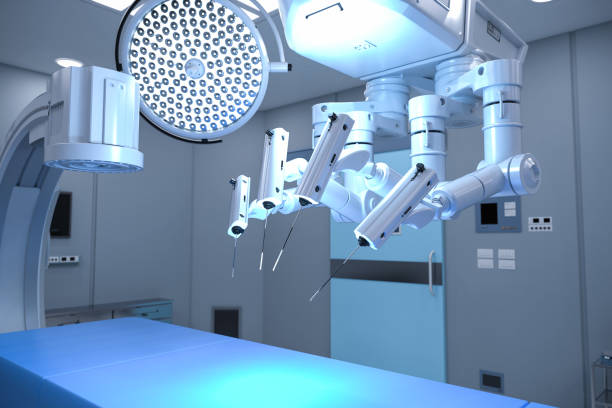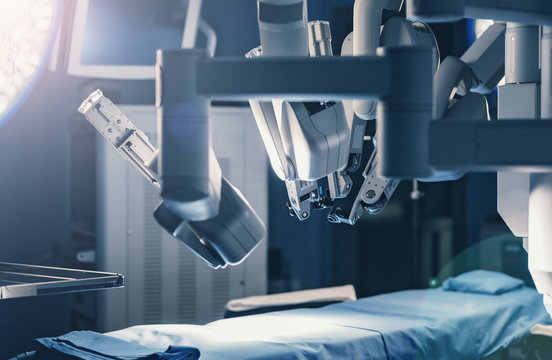In today’s rapidly advancing healthcare landscape, medical robotics stands at the forefront of innovation, promising to revolutionize the way we approach treatment and care. These sophisticated technologies are not just tools but transformative agents in improving patient outcomes and reshaping medical practices worldwide.
Also Read: Caring For the Heart: Boosting Heart Health with Proven Strategies
Enhanced Precision in Surgeries
Medical robotics have drastically enhanced the precision and accuracy of surgical procedures. Robotic arms equipped with advanced tools can perform intricate maneuvers with unmatched dexterity, reducing the margin of error significantly. Surgeons can now execute complex surgeries with more confidence and achieve better surgical outcomes.

Minimally Invasive Procedures
One of the most significant contributions of medical robotics is in the realm of minimally invasive procedures. Unlike traditional open surgeries, robotic-assisted surgeries require smaller incisions, leading to faster recovery times, reduced pain, and lower risks of complications. Procedures such as prostatectomies and cardiac surgeries have been transformed, offering patients a less-invasive treatment option with improved results.
Medical Robotics: Personalized Treatment Plans
The integration of artificial intelligence (AI) with robotic systems has enabled healthcare providers to deliver personalized treatment plans. By analyzing vast amounts of patient data in real-time, robotic technologies can adapt and customize therapies according to individual patient needs. This tailored approach not only enhances treatment efficacy but also improves patient satisfaction and recovery rates.
Remote Surgery Advances
Advancements in medical robotics have also paved the way for remote surgery capabilities. Through teleoperation, surgeons can perform procedures on patients located in distant locations, overcoming geographical barriers and enhancing access to specialized healthcare services. This capability is particularly crucial in emergency situations and underserved regions, where immediate surgical intervention can be lifesaving.

Faster Recovery and Reduced Hospital Stays
Patients undergoing robotic-assisted surgeries often experience faster recovery times and shorter hospital stays compared to traditional methods. Reduced trauma to surrounding tissues and organs, coupled with precise surgical techniques, contribute to quicker healing and rehabilitation. This not only benefits patients by allowing them to resume normal activities sooner but also reduces healthcare costs associated with prolonged hospitalizations.
Future Trends and Innovations
Looking ahead, the future of robotics holds promising developments. From advancements in nanorobotics for targeted drug delivery to the integration of augmented reality for enhanced surgical visualization, ongoing research and innovation continue to push the boundaries of what is possible in healthcare. These technologies promise to further optimize patient care, improve surgical outcomes, and expand the scope of medical interventions.
Conclusion
In conclusion, medical robotics is not just a technological marvel but a catalyst for transforming healthcare as we know it. By enhancing precision, enabling minimally invasive procedures, personalizing treatment plans, and facilitating remote surgeries, these innovations are revolutionizing patient care worldwide. Embracing these advancements will not only lead to better outcomes for patients but also pave the way for a more efficient and accessible healthcare system.
FAQs
Q: Are robotic surgeries safe?
Robotic surgeries have been shown to be safe, with comparable or lower complication rates than traditional surgeries in many cases. However, there are risks with any surgical procedure, and trained medical professionals manage them.
Q: Do robotic surgeries cost more?
Initially, robotic surgeries may have higher upfront costs due to equipment and training. However, they can lead to cost savings in the long run through reduced hospital stays and fewer complications.
Q: Can anyone undergo robotic surgery?
Eligibility for robotic surgery depends on various factors, including the specific procedure and the patient’s medical condition. A consultation with a healthcare provider can determine suitability.
Q: What are the limitations of medical robotics?
While highly advanced, medical robotics may have limitations in very complex surgeries requiring human decision-making or in procedures where tactile feedback is crucial.
Q: How can I find a hospital offering robotic surgeries?
Hospitals and medical centers with robotic surgery capabilities are often listed on their websites or can be found through referrals from healthcare providers.